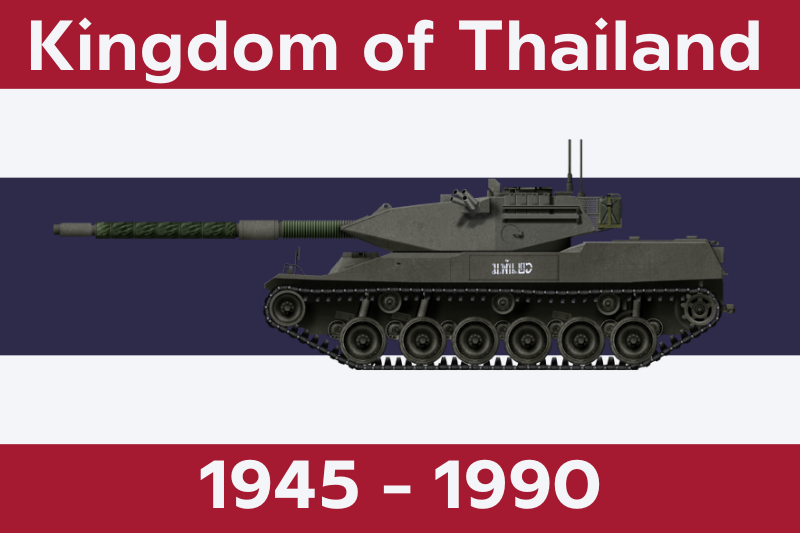Vehicles
At the end of the Second World War, Thailand quickly found itself immersed in the nascent Cold War. Thailand sided with the USA and joined their military assistant program in 1952, which quickly modernized the Royal Thai Army. Obsolete World War 2 equipment, such as the Type 95 Ha-Go or Vickers 6-ton tanks were replaced with the more advanced M24 Chaffee light tanks and M3 Half-Tracks. The year 1962 saw the arrival of M41A3 Walker Bulldogs and M113A2 APCs, with both becoming the backbone of the Royal Thai Army’ cavalry units for the years to come.
In the late 1970s and early 1980s, the threat from Communist Vietnam was of great concern to the Thai military hierarchy. To prepare for a potential conflict, in 1979, Thailand ordered M48A5 from the US to reinforce its cavalry units with more powerful main battle tanks. A decade later, in 1988, these were followed up with Type 69-IIA tanks and Type 85 APCs that were ordered from China, and lastly, the Commando Stingray that were delivered in 1989.
In the 1980s, the Thai defense industry began to bloom. This era saw the creation of many domestic armored projects, both fully-tracked and wheeled, such as the 15 Tonnes IFV, 7 Tonnes Armored Car, Commando Scout, or even self-propelled howitzers, such as the Porborkhor 105 Attajhon.
Since the end of World War 2 and throughout the Cold War period, Thailand has been very politically unstable, which resulted in 8 coups and 9 rebellions, the most notable being the 1947 military coup which ended the political rule of the Khana Ratsadon party, or the failed 1981 ‘Young Turk Rebellion’, which is considered to be one of largest rebellions in Thai history.

